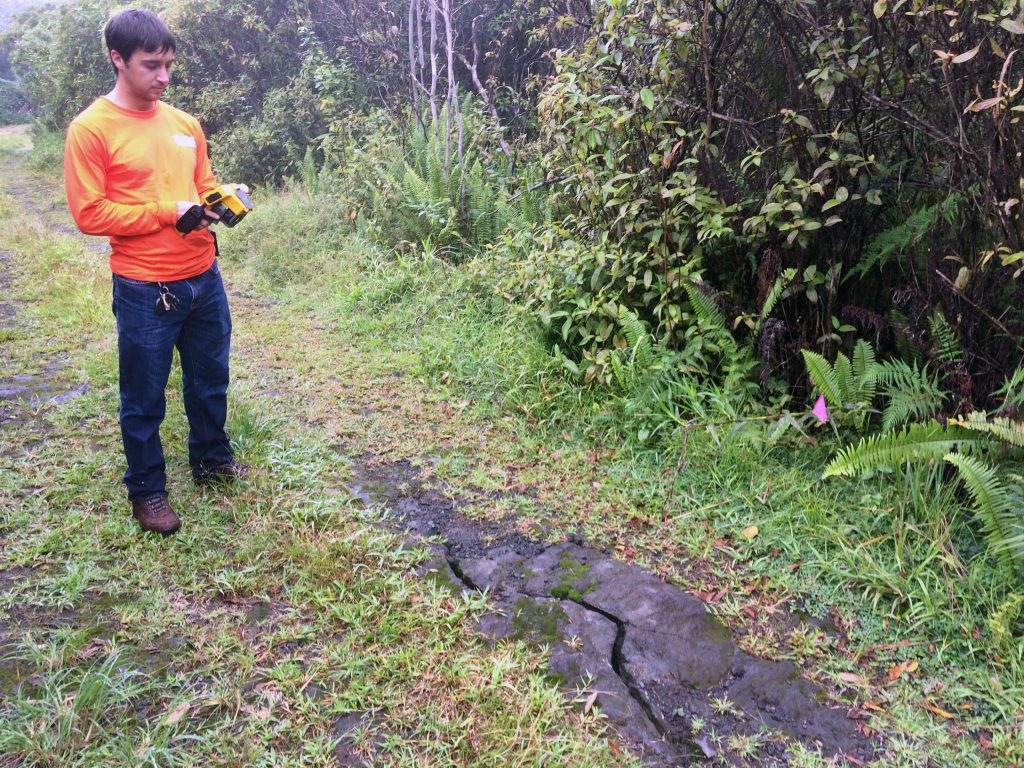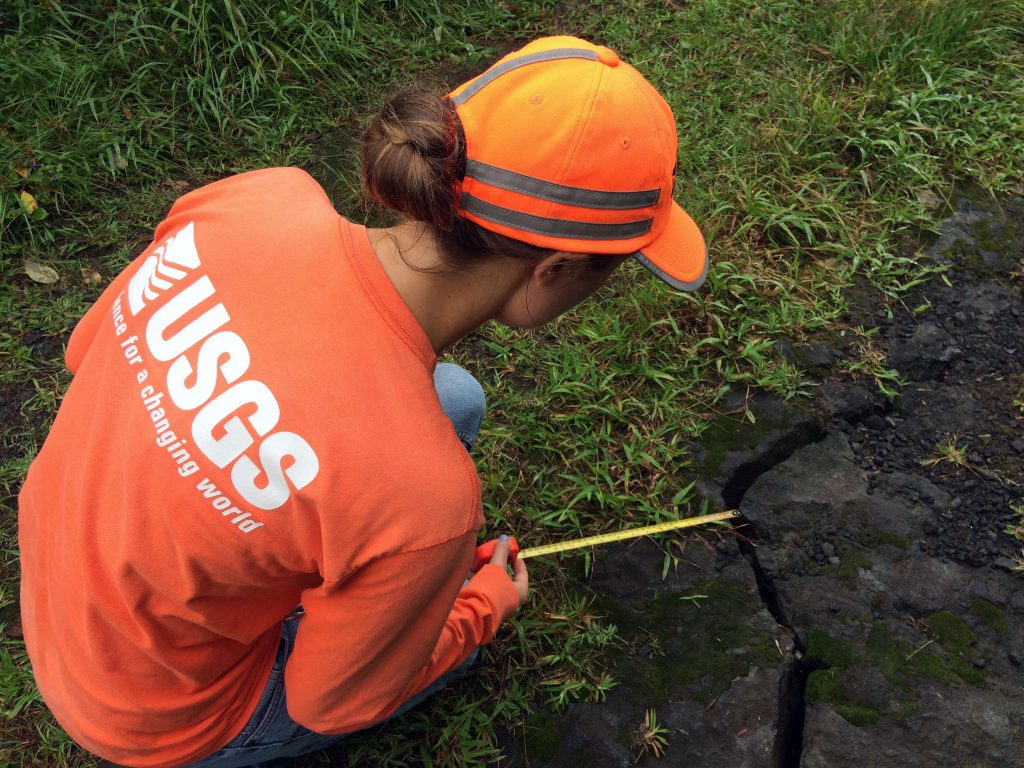Minor Amounts of Volcanic Gas Still Present
The U.S. Geological Survey released the Hawai‘i Volcano Observatory Weekly Update on Tuesday, Dec. 11, 2018.
Kīlauea Volcano is not erupting. Rates of seismicity, deformation, and gas release have not changed significantly over the past week. Deformation signals are consistent with refilling of the middle East Rift Zone.

USGS scientists continue to monitor some of the cracks in the lower East Rift Zone to check for any significant changes on Nov. 30, 2018. This scientist is using an infrared thermometer to record the temperature within the ground cracks. Click to enlarge. PC: USGS
Observations: HVO monitoring during the past week showed no significant changes. Geologic web cams observed gusty winds lofting and remobilizing some of the ash at the summit of Kīlauea. Low rates of seismicity at the summit and East Rift Zone (ERZ) continue, with events occurring primarily at Kīlauea’s summit and south flank areas. In the ERZ, tiltmeters showed little change over the last week, with GPS indicating some inflation downrift from Puʻu ʻŌʻō. At the summit, tiltmeters recorded one DI (deflation-inflation) sequence in the middle of last week, with minor fluctuations in tilt through the rest of the weekend. Sulfur dioxide emission rates have been below detection limits in the LERZ since early September, though minor amounts of volcanic gas are still present. Sulfur dioxide emission rates were last measured at ~35 t/d at both the summit and ERZ, consistent with the past few months of emissions from Kīlauea.

USGS scientist measures and documents the width of a ground crack. Other than temperature and crack width measurements, geologists also note any visual or audible changes such as steam and water boiling heard in the hottest cracks. Click to enlarge. PC: USGS
Hazards are still present in the LERZ eruption area and at the Kīlauea summit. Residents and visitors near recently active fissures and lava flows should stay informed, heed Hawai‘i County Civil Defense and National Park warnings, and be prepared, if necessary, to self-evacuate in the unlikely event of renewed activity. Note that Hawai‘i County maintains a closure of the entire flow field and the vents and prohibits access to the area unless authorized through Civil Defense.
The Hawaiian Volcano Observatory (HVO) continues to closely monitor Kīlauea’s seismicity, deformation, and gas emissions for any sign of reactivation, and maintains visual surveillance of the summit and the East Rift Zone. HVO will continue to issue a weekly update (every Tuesday) and additional messages as warranted by changing activity.












